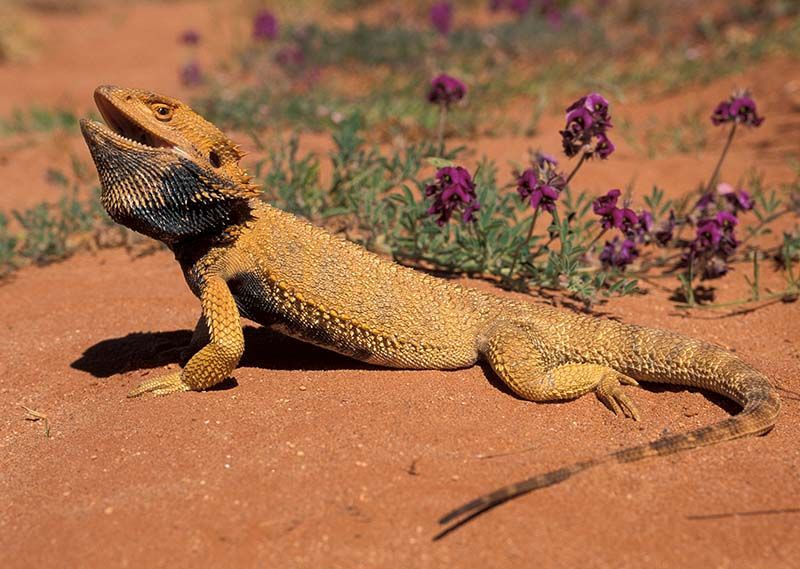
Pogona vitticeps, the central (or inland) bearded dragon, is a species of agamid lizard occurring in a wide range of arid to semiarid regions of Australia. This species is very popularly kept as a pet and exhibited in zoos.

Description
Pogona vitticeps was first described by Ernst Ahl in 1926, who placed it in the genus Amphibolurus.[3][4]
A studied conducted in 2014 established the existence of endogenous circadian rhythm in pigmentation changes in Pogona vitticeps. In other words, light and dark can influence the color changes of this kind of lizards. If exposed to light, the dorsal skin of the lizard becomes darker, and if exposed to darkness, it becomes lighter. Under constant darkness (i.e. in the subjective night), the lizards’ dorsal skin becomes the lightest.[5]
Ecology and behaviour
This dragon is native to the semiarid woodland, arid woodland, and rocky desert regions of Central Australia.
They are skilled climbers, and often spend just as much time perching
on tree limbs, fenceposts, and in bushes as they do on the ground. They
spend the morning and early evening sunning
themselves on exposed branches or rocks, and retreat to shady areas or
underground burrows during the hottest parts of the afternoon.
Bearded dragons do not vocalize, except to hiss softly when
threatened. Instead, they communicate through colour displays, posture,
and physical gestures, such as leg waving and head bobbing. Bearded
dragons are not social animals, but will sometimes gather in groups,
especially in popular feeding or basking areas. At these times, a
distinct hierarchy
will emerge: the highest-ranking animals will take the best - usually
the highest or sunniest - basking spots, and all other individuals
arrange themselves lower down. If a low-ranking animal tries to
challenge one of the dominant dragons, the dominant animal will
demonstrate its superiority by bobbing its head and inflating its beard,
at which point the challenger may signal submission by waving one of
its front legs in a slow or fast circle. If the low-ranking dragon does
not submit, it will return the head bob, and a standoff or fight may
ensue.
The several different kinds of head bob gestures are:
The male will only wave to show submission to a dominant male,
whereas the female will wave, followed by a slow head bob, to show she
is ready to mate. Gravid females will often refuse the advances of a
male by chasing him and lying on his back.
When under direct attack, the central bearded dragon opens its mouth to display its yellow membranes and extend its beard.[6]
It darkens the colour of its skin and flattens its body, and will hiss
and make small jumps towards the attacker. Bearded dragons are not known
to attack humans.[7]
Bearded dragons have been shown to be able to learn from watching the
behaviour of conspecifics. An experiment demonstrated that after one
individual was trained to open a door to reach a food item, most other
bearded dragons watching this action were able to perform it as well.[8]
Reproduction
Courtship involves the male "head bobbing" to display dominance. If the female displays submissive behaviour, the male will use its mouth to grab the back of the female's head and the male will also wrap its front legs around the female's upper torso to keep her from moving. Copulation and insemination are quick. The gestation period averages about a month and a half.
A 2016 study showed that high-temperature incubation of eggs transforms genetically male individuals into functional females.[11]
Normally their sex is determined genetically. Males have ZZ sex chromosomes, females ZW. However, when their eggs are incubated at temperatures above 32 °C (90 °F) some genetic males are born female. These females are fertile, sometimes producing more eggs than the ZW females. [12]
Captive breeding
Several of the Pogona genus are bred in captivity as pets; the two most popular are this species, P. vitticeps, and the western bearded dragon (Pogona minor minor).[13][14]
The bulk of captive-bred bearded dragons today are thought to have
originated from stock illegally exported from Australia during the
1970s.[15]
Captives worldwide are threatened by Agamid adenovirus,
a virus that compromises the immune system of the dragon, and leads to
death from other diseases. However, the majority of the infections are subclinical. Subclinically infected animals show no symptoms, but are active carriers of the disease and will infect other bearded dragons.
When the female is ready to lay eggs, she will generally stop eating and spend most of her time trying to dig.[citation needed]


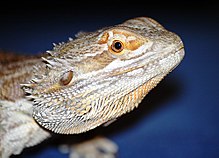




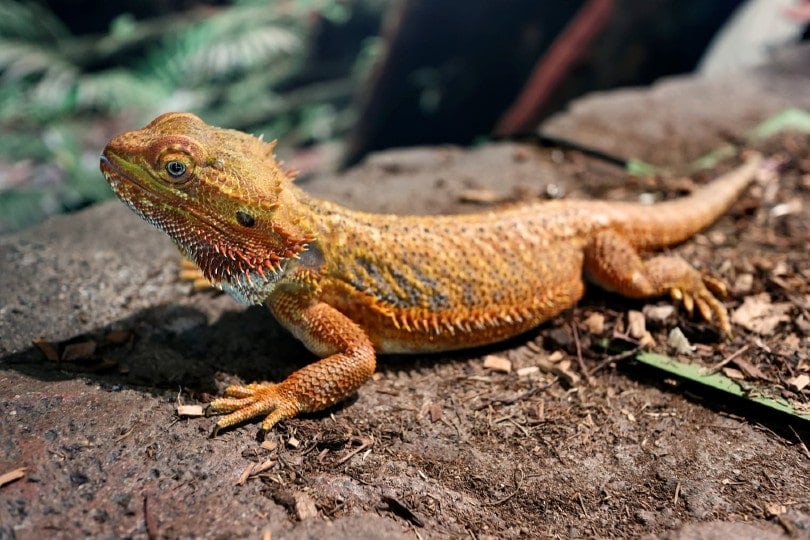
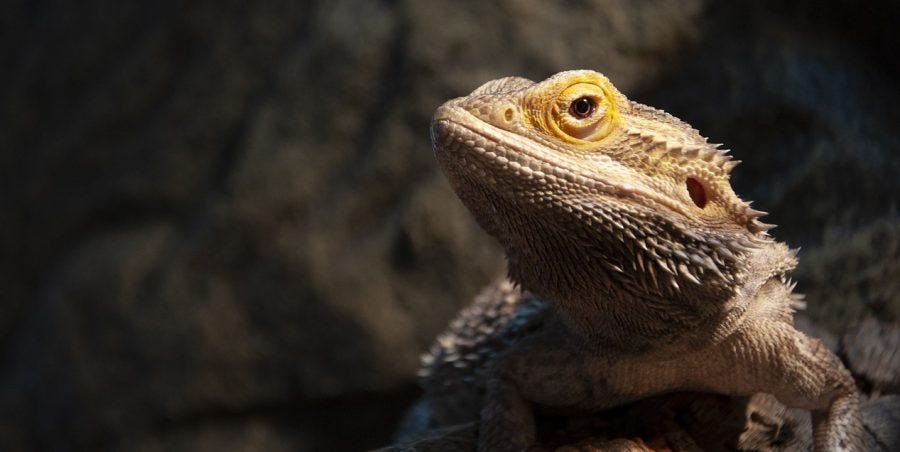

No comments:
Post a Comment
Note: Only a member of this blog may post a comment.